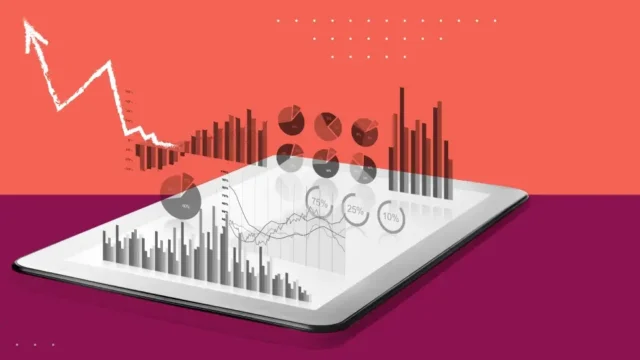
Still using Excel? Here’s why old isn’t always gold
Find out why Excel can’t compare to new, automated accounting solutions.
In a previous post, we discussed the 4 ways corporate accounting has changed (and stayed the same) in 40 years. Somehow, accounting today looks very different and still very much the same as it used to. The accounting world is constantly evolving and adapting to new technologies that the digital age brings, and yet old habits die hard.
As we regularly see, there are many firms and companies that still use older programs like Excel rather than newer automated solutions that are available. Over the years there have been numerous organizations that have made Excel blunders. Regardless of the program’s popularity among accountants, these spreadsheets are error-prone and the errors themselves aren’t always complex. The slightest misstrike of a key is all it takes to cost your company immense financial loss. Even those that are experienced Excel users are capable of making detrimental errors using the tool.
So how do we avoid this? Simple: embrace the digital age and integrate automated solutions and cloud-based technologies.
Here are three major reasons why solution-driven software overpowers the use of this outdated program.
1. Enhanced risk controls
According to Business Insider, in 2012, London’s JP Morgan released a 129-page report outlining the $6 billion trading loss they encountered due to an Excel error. The organization was using Excel to manually copy and paste data from spreadsheets to create value-at-risk models. Due to a miniscule copy-and-paste error, an employee accidentally entered the wrong information and cost the company billions of dollars.
Mistakes like this continue to happen today and remind us of the disadvantages of working with manual spreadsheets. This past October, the United Kingdom also fell prey to Excel errors as Public Health England (PHE) accidentally lost 16,000 COVID-19 test results. Due to the limited number of rows and columns per file, there were 15,841 new records that were excluded from the official database, ultimately skewing the figures for positive COVID-19 results. This resulted in poor contact tracing efforts from the PHE, demonstrating the real-world impacts that could have easily been avoided.
Companies are constantly measuring their success looking at key performance indicators like return on investment (ROI). These organizations need to consider their ROI and evaluate whether using outdated programs like Excel is worth not only the financial risk but reputational risk as well. When analyzing risk management techniques, the implementation of new technologies that replace Excel reduces the risk of error, simplifies the process and produces more accurate results.
2. Workforce demographics
There is a shift in the workforce demographic, as many younger and tech-savvy individuals are joining the job market. The incoming workforce was born in the digital age and is surrounded with technology and taught to value innovation.
Excel has its benefits, yes, the cost of ownership is low and it is easy to use, but there is more at risk using these spreadsheets. There is a resistance to adopt new cloud-based technology from existing employees and older financial professionals who are set in their ways. However, the skillset trends for these new accountants require adaptability and analytical skills in order to have a competitive advantage. According to CPA Canada’s Michael Wong, who serves as principal of research, guidance and support, CPAs need to learn how to access databases and understand coding languages in order to be successful in the future.
During the Journal of Accountancy virtual roundtable, when asked about the new technologies changing the ways accountants do business, panelist Amanda Wikie suggests people majoring in accounting, “throw in a computer science minor or a math minor…[or] look into online courses or something that is going to give [you] that computer science background to add to your accounting knowledge.” It becomes clear that the accounting and auditing world will incorporate more technology than has been implemented in the past. Due to the robust promotion of innovation in our data-driven society, and as the demographic of tech-savvy graduates are expected to join the workforce, organizations need to begin thinking Beyond Excel.
“CPAs need to learn how to access databases and understand coding languages in order to be successful in the future.”
-Michael Wong,
Principal of Research, Guidance and Support, CPA Canada
3. Data analytics
Big Data is here, and here to stay. It is important for organizations to understand the value of data analytics and understand the ways outdated tools like Excel may actually be hindering their data communication.
The Journal of Accountancy is predicting an influx of big data scientists and engineers to develop audit and advisory products. These individuals are expected to understand software for data analytics, and firms in the top 50 have begun to add these individuals to their teams. The top-performing firms are beginning to prioritize this awareness of software applications. This showcases the fact that being able to communicate and evaluate data is integral to organizations, and the industry adoption of automated analytics is on the rise.
Communicating ROI and other key performance metrics is going to be expected moving forward, and Forbes explains why these spreadsheets are causing a huge disconnect. These sheets are not only difficult to analyze and share, but data is often hidden and lost. Excel allows users to view large sums of raw data at once, and with this high volume of data it becomes seemingly more difficult to interpret and decide the best course of action. When these sheets are updated, historical data is lost and organizations fail to recognize significant trends over time.
Are you still using excel for accounting? Learn about our streamlined, secure accounting solutions today.








